Key takeaways:
- Summative assessments evaluate student learning at the end of an instructional period but can overlook individual learning differences, particularly for students with dyslexia.
- There is a need for diverse assessment methods, such as project-based and oral presentations, to accurately reflect students’ understanding and creativity.
- Conventional assessments can create stress and fail to celebrate student progress, particularly for those with learning differences; flexible approaches are crucial.
- Incorporating formative feedback alongside summative assessments helps foster a growth mindset and emphasizes improvement over final outcomes.
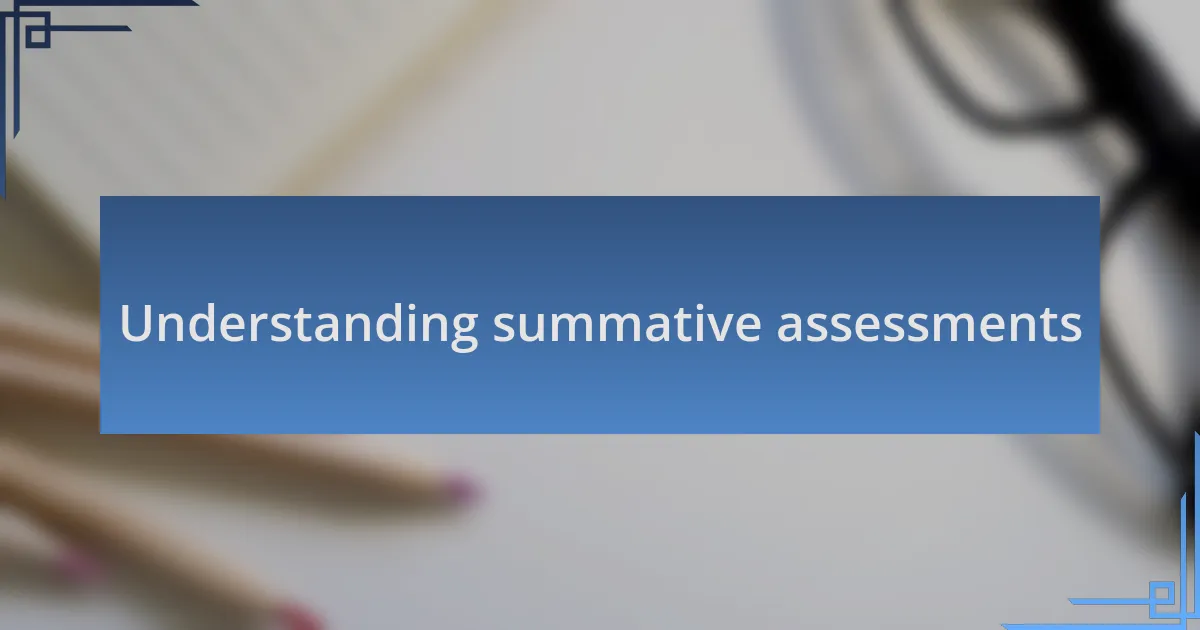
Understanding summative assessments
Summative assessments serve as a crucial way to evaluate student learning at the end of an instructional period. I remember my own experiences with such assessments, feeling a mix of anxiety and anticipation; they often felt like the culmination of everything learned. Have you ever found yourself questioning if a single test could truly represent one’s understanding?
These assessments typically include final exams, projects, or standardized tests, designed to measure the knowledge acquired over the course of a unit or term. I’ve seen firsthand how they can sometimes fail to capture the nuances of a student’s abilities, especially for those with learning differences like dyslexia. It’s a frustrating reality that can leave students feeling misunderstood and undervalued.
While they provide valuable data on overall performance, the challenge lies in their potential to overlook individual learning journeys. It’s a bittersweet feeling when I reflect on how rigid structures can mask the creativity and unique perspectives students bring to learning. What if we reimagined summative assessments to better honor and showcase diverse learning styles?
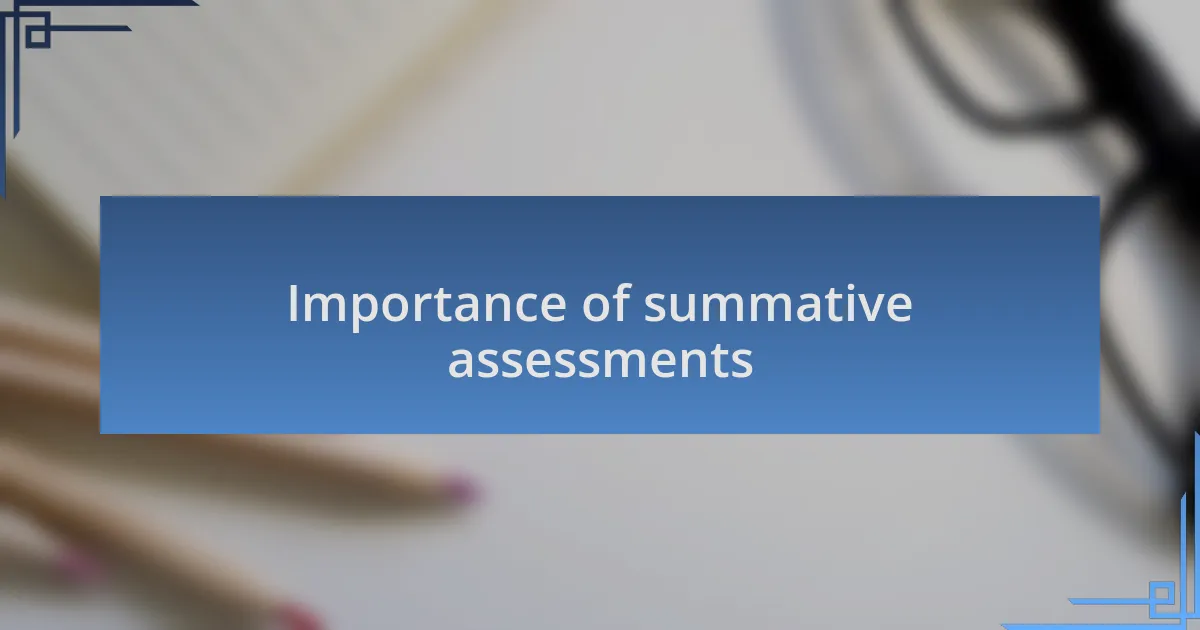
Importance of summative assessments
Summative assessments play a pivotal role in providing a final snapshot of a student’s progress. I recall a time when a well-structured project helped illuminate my own understanding of a complex topic in school. It was in that moment that I realized how these evaluations can clarify strengths and illuminate areas needing improvement, guiding both students and educators in future learning endeavors.
Moreover, these assessments serve as a common language for measuring educational outcomes. I’ve seen how they can foster conversations among teachers, parents, and administrators about student performance. It’s almost like holding up a mirror to the educational process and asking critical questions: Are we truly meeting our students’ needs? Are we acknowledging their diversity in learning styles?
However, it’s essential to approach summative assessments with an open mind and a flexible lens. Sometimes, I think about how these evaluations can inadvertently create stress and anxiety for students, particularly those with dyslexia who might struggle in traditional testing formats. What if we could design these assessments to resonate more deeply with various learning profiles, merging creativity and comprehension?
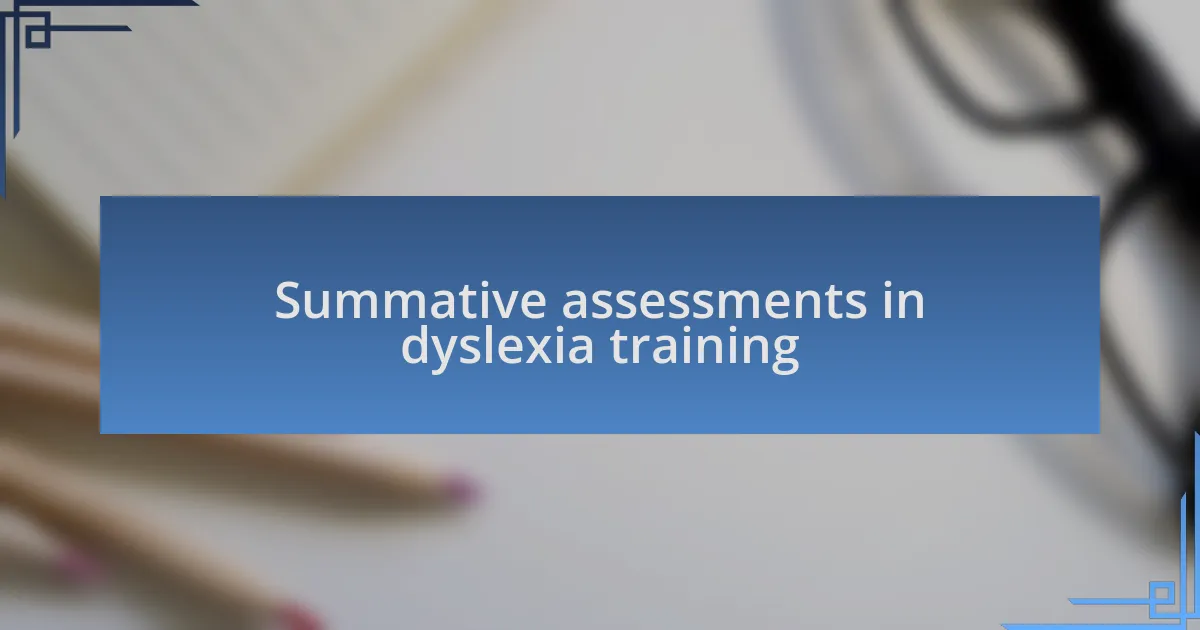
Summative assessments in dyslexia training
Summative assessments in dyslexia training can offer valuable insights into a learner’s journey. I remember a student who expressed relief when assessments incorporated multi-sensory elements, allowing for a better demonstration of her knowledge. This shift not only boosted her confidence but also provided teachers with a clearer understanding of her strengths and struggles.
When I reflect on the role of summative assessments, I often wonder if they truly capture the entire picture of a student’s capabilities. For those with dyslexia, traditional methods can obscure the brilliance that often lies beneath the surface. Shouldn’t we strive for assessments that celebrate diverse learning styles rather than confining students to a one-size-fits-all approach?
In my experience, aligning assessments with practical outcomes is crucial. One poignant moment was when a student showcased her project through storytelling instead of a standard test format. That not only highlighted her knowledge but also emphasized her creative thinking—a vital skill often overlooked in conventional assessments. How might our education system evolve if we consistently embraced such tailored approaches in evaluating dyslexia training?
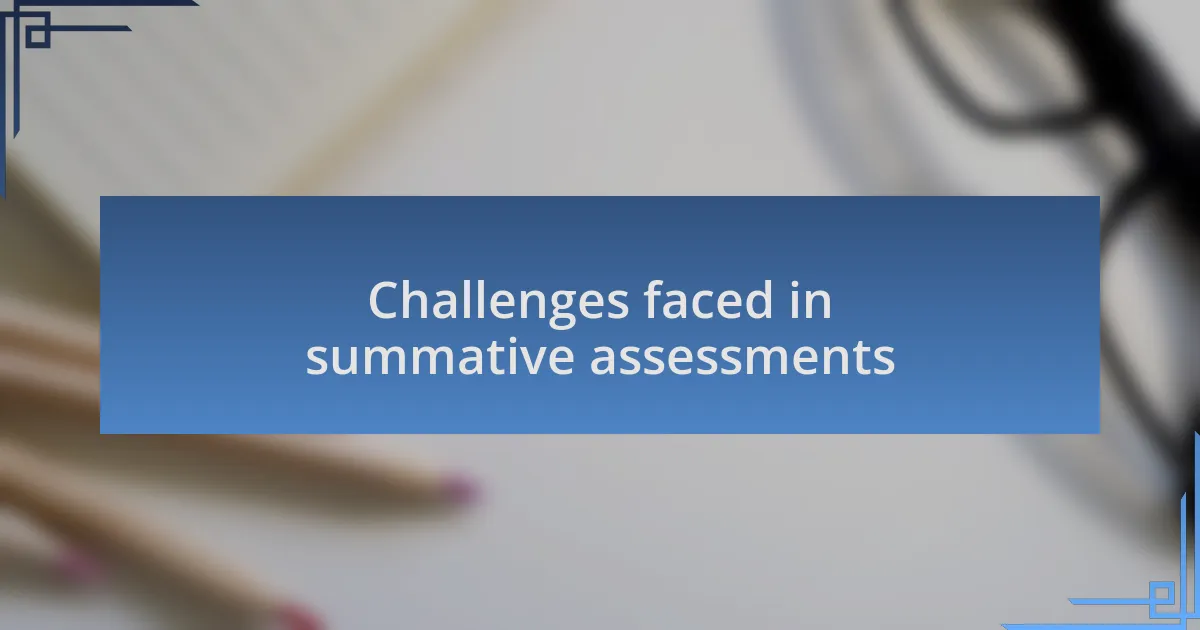
Challenges faced in summative assessments
One significant challenge faced in summative assessments is the stress they impose on students with dyslexia. I’ve seen firsthand how the pressure of timed tests can lead to anxiety, making it difficult for students to demonstrate what they truly know. Isn’t it disheartening when an assessment designed to measure knowledge inadvertently hinders a student’s performance?
Moreover, conventional assessments often rely heavily on written responses, which can disadvantage those who struggle with reading and writing. I once had a student who had brilliant ideas but faltered during a written exam. It made me question how many insightful thoughts go unexpressed simply due to the format of the assessment. Isn’t it essential that we rethink how we evaluate learning so that every student has the opportunity to shine?
Lastly, the feedback from summative assessments rarely reflects the growth of students with dyslexia. I vividly recall a parent’s frustration when their child received a low score despite showing remarkable improvement over the semester. How can we celebrate progress if our assessments focus solely on final outcomes? This disconnect can leave both students and educators disheartened and questioning the purpose of the assessment process itself.
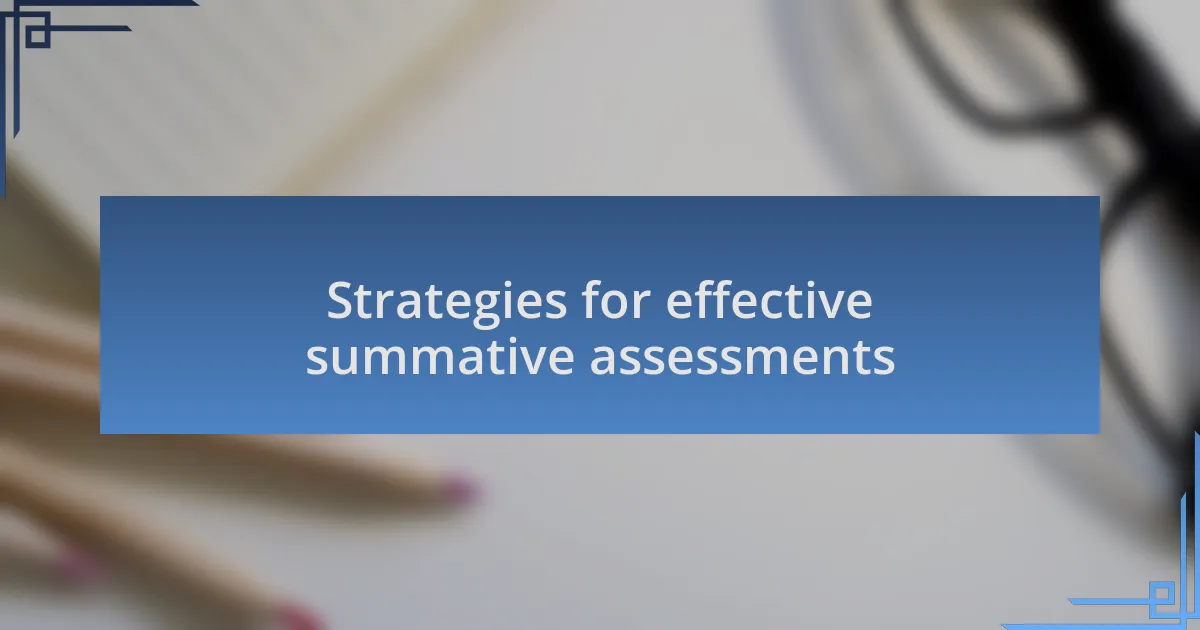
Strategies for effective summative assessments
To create more effective summative assessments, I’ve often found that incorporating varied formats can significantly enhance fairness for students with dyslexia. For instance, allowing oral presentations or project-based assessments can provide a platform for students to express their understanding without the constraints of written language. I remember one student who thrived when he was able to present his knowledge through a visual project instead of a traditional test. How liberating must it feel for students to showcase their strengths in a way that truly reflects their potential?
Another strategy that has proven beneficial is providing extended time for assessments. I can recall when I advocated for a flexible timeframe for an assessment, seeing how it alleviated my students’ stress and allowed them to think more clearly. By reducing the pressure of the clock, we open the door for thoughtful engagement, allowing each student the chance to achieve their best. Isn’t it vital that we give every learner the opportunity to show what they’ve learned on their own terms?
Lastly, I believe in the power of formative feedback as a companion to summative assessments. After an assessment, I make it a point to provide constructive feedback that emphasizes strengths and growth areas, rather than solely focusing on grades. I’ve seen how this approach not only motivates students but also fosters a growth mindset that embraces improvement over perfection. Isn’t it wonderful to think about assessments not just as endpoints, but as valuable milestones in a lifelong learning journey?